Affiliate links on Android Authority may earn us a commission. Learn more.

Google Pixel 4 XL
What we like
What we don't like
Our scores
Google Pixel 4 XL
Every year, the Pixel has a problem. The first had terrible build quality, the second had display issues, and the third a poor battery experience. And every year, we collectively hold our breath and hope that this time Google will address the issues and produce a Pixel that truly lives up to its potential.
This is not that year.
While the Pixel 4 is good and has plenty of promise, it still falls short of expectations. This is not to say it’s a bad phone, it’s actually really great in several areas. It’s just a bit disappointing, because while it brings some innovative technical marvels, a pedestrian necessity like battery life is still left unaddressed. And while Google typically gets a pass because it’s Google, the Pixel 4 is nowhere near as competitive as what other manufacturers offer. The simplest way to put it: the Pixel 4 feels like a phone designed for Google engineers rather than the average consumer. Let’s get into our Google Pixel 4 XL review.
Don’t miss: Google Pixel 4 XL one year later review — Is it still worth buying?
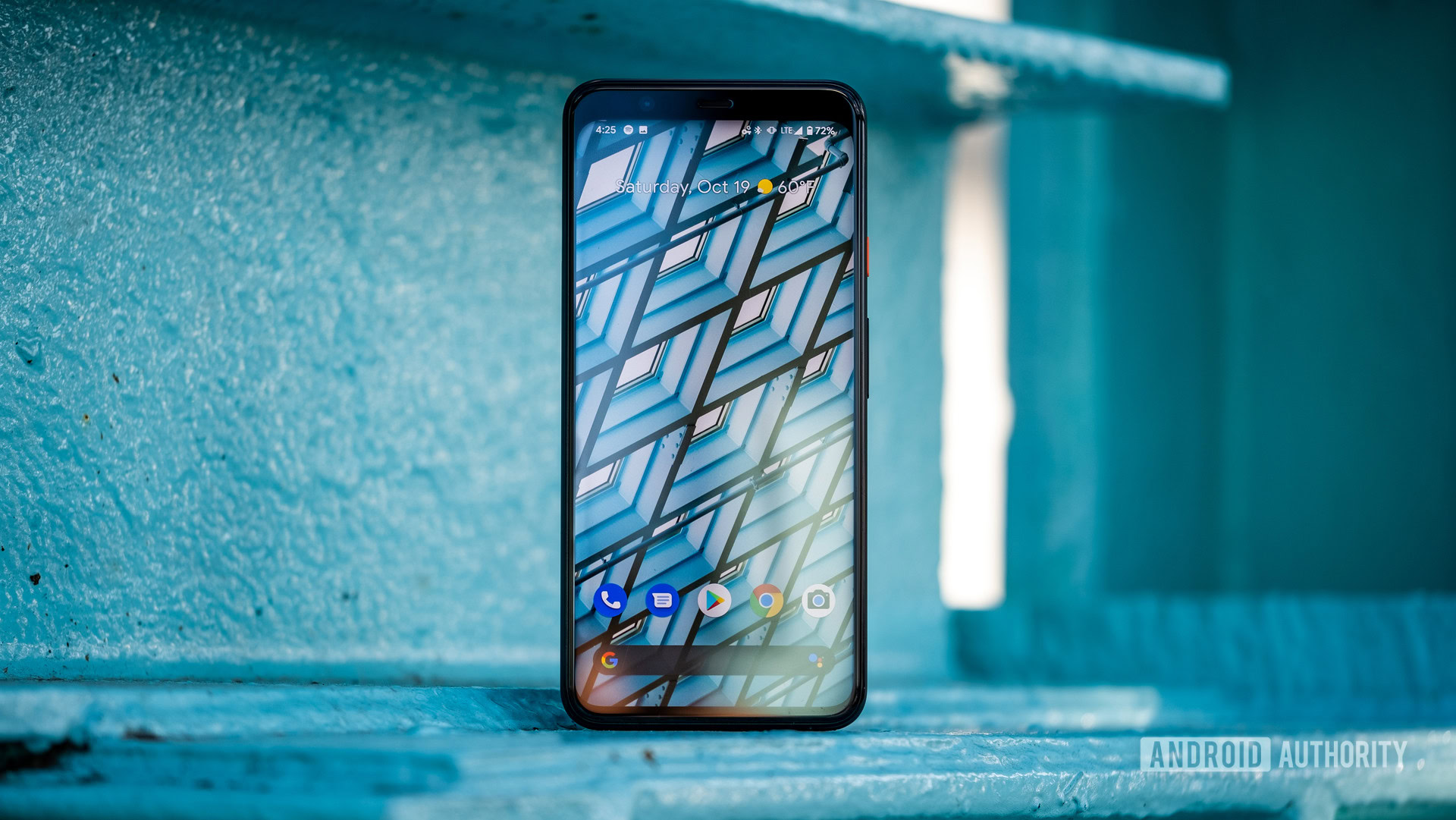
Google Pixel 4 XL review: The big picture
It’s difficult to position the Pixel 4 in Android terms because Google itself seems intent on positioning it in Apple terms. Specs aren’t the priority here, convenience is. Customization is trumped by auto-everything. The price is not backed up by any traditional definition of value, and so on. The only phone I can honestly say the Pixel 4 is competing with is the iPhone 11 series. It certainly isn’t speaking the same language as other Android phone makers and so can’t really be understood in those terms.
For us, the Pixel 4 and Pixel 4 XL are the “but” phone. They have amazing capabilities and some groundbreaking tech, but they’re a bit myopic. Yes, a radar-based gesture system is awesome, but what good is it if the battery life sucks? Yes, astrophotography mode is a remarkable achievement, but it needs a wide-angle lens to shine (especially at this price). Yes, a face unlock system is good, but if your apps don’t support it because Google didn’t flex like Apple did, is it really better than a fingerprint? You get the idea: the Pixel 4 is great, but…
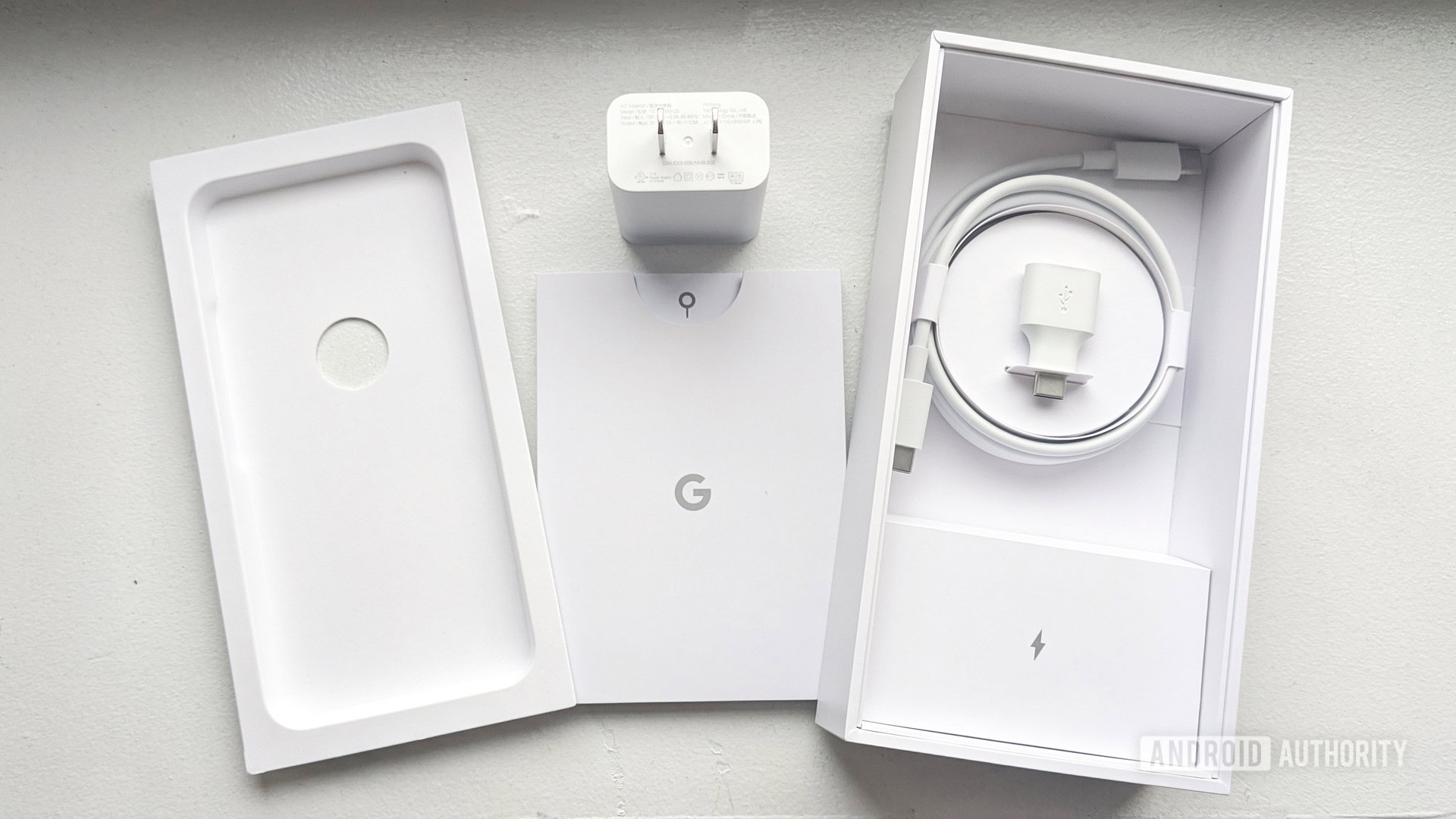
What’s in the box
- 18W/2A charging brick
- USB-C to USB-C cable
- USB-C to USB-A adapter
- SIM ejector tool

Design
- Pixel 4:
- 68.8 x 147.1 x 8.2mm
- 162g
- Pixel 4 XL:
- 75.1 x 160.4 x 8.2mm
- 193g
- Gorilla Glass 5 front and back
- Matte finish aluminum frame
- IP68 dust- and water-resistance
- Active Edge for Google Assistant
The Pixel 4 design is pretty divisive, with some people loving it and others hating it. This is especially true of the square camera bump on the back. I don’t hate it, but I’m also not much of a fan. I do, however, like the general styling and design here. There are three launch colors: a glossy black, a limited edition “Oh So Orange,” and a black and white stormtrooper version.
Don’t miss:
The black version is the only one with a glossy back, while the other two are matte. I think the matte finish is the better approach here. Not only does it attract fewer fingerprints, it’s also a nicer feeling texture. It’s reminiscent of a soft-touch polycarbonate but is actually frosted glass.
The Pixel 4 design is pretty divisive, with some people loving it and others hating it.
Regardless of which color you get, there’s a matte black aluminum frame, which I can only assume is a response to the notoriously slippery edges of the Pixel 3. This is a welcome change to the bare aluminum frames you’ll see on most other phones. It’s better for grip, shows fewer dings and scratches, and adds a little additional flair to your phone.
I understand the distaste for the large forehead at the top of the screen, but I prefer that over a notch any day. Your opinion on this front may of course vary.
There’s no fingerprint reader on the back, nor under the display. There’s no fingerprint reader whatsoever.
All told, the Pixel 4 design is bold and confident, whether you like it or not.
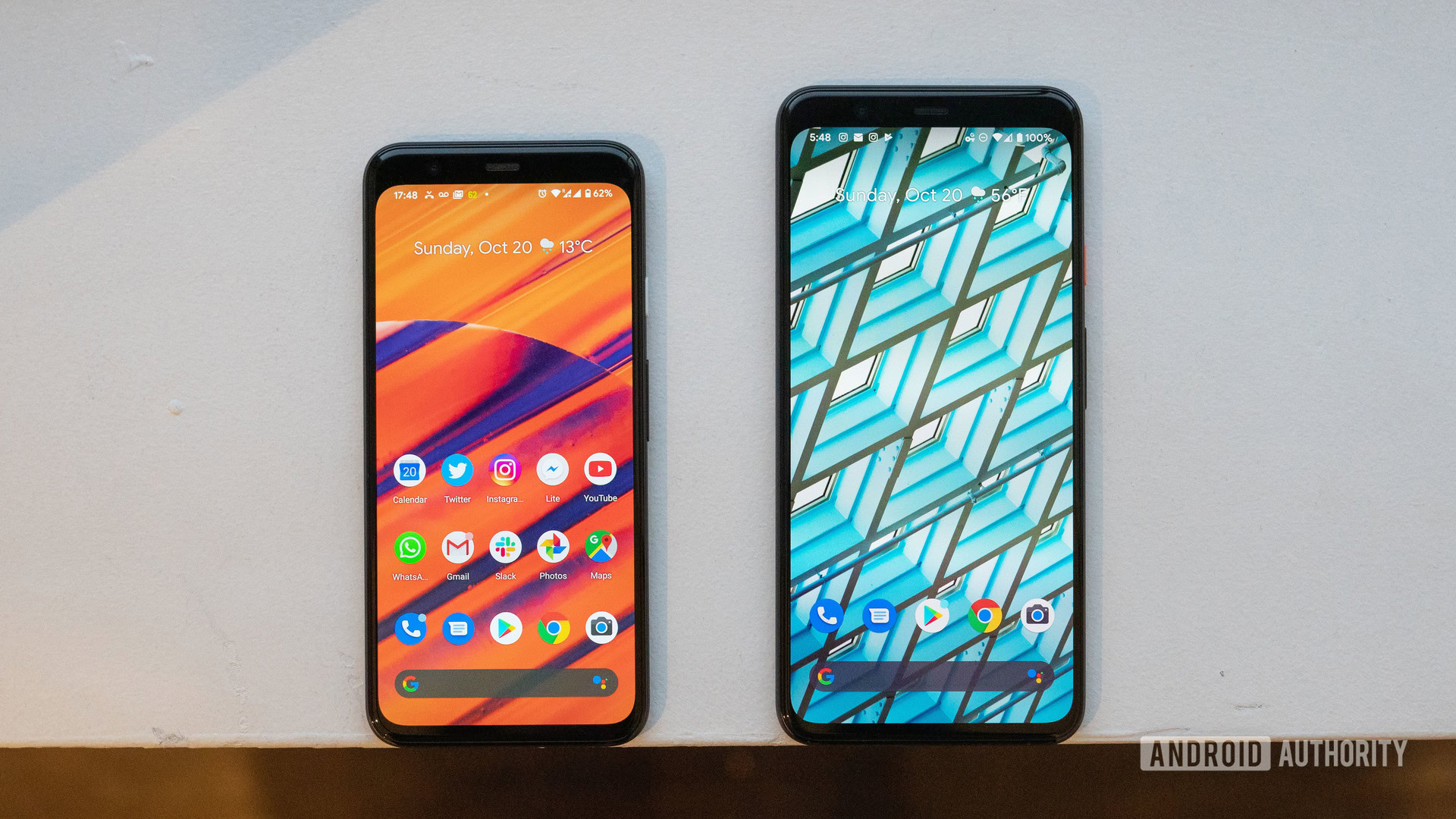
Display
- Pixel 4:
- 5.7-inch Full HD+ OLED
- 2,280 x 1,080 pixels, 444ppi
- Pixel 4 XL:
- 6.3-inch Quad HD+ OLED
- 3,040 x 1,440 pixels, 537ppi
- 19:9 aspect ratio
- Adaptive 90Hz refresh rate
- HDR support (UHDA certified)
- Always-on display, Ambient EQ
Google opted for a 90Hz variable refresh rate display on the Pixel 4. The adaptive refresh rate is good, and felt responsive and fluid through our Google Pixel 4 XL review period. The display drops to 60Hz when it is not required or not supported (e.g. in some games), so you don’t take quite the same battery hit as you might on a display that’s permanently running at 90Hz. Still, if you’re concerned about Pixel 4 battery life, and you should be, then turning it off is always an option.
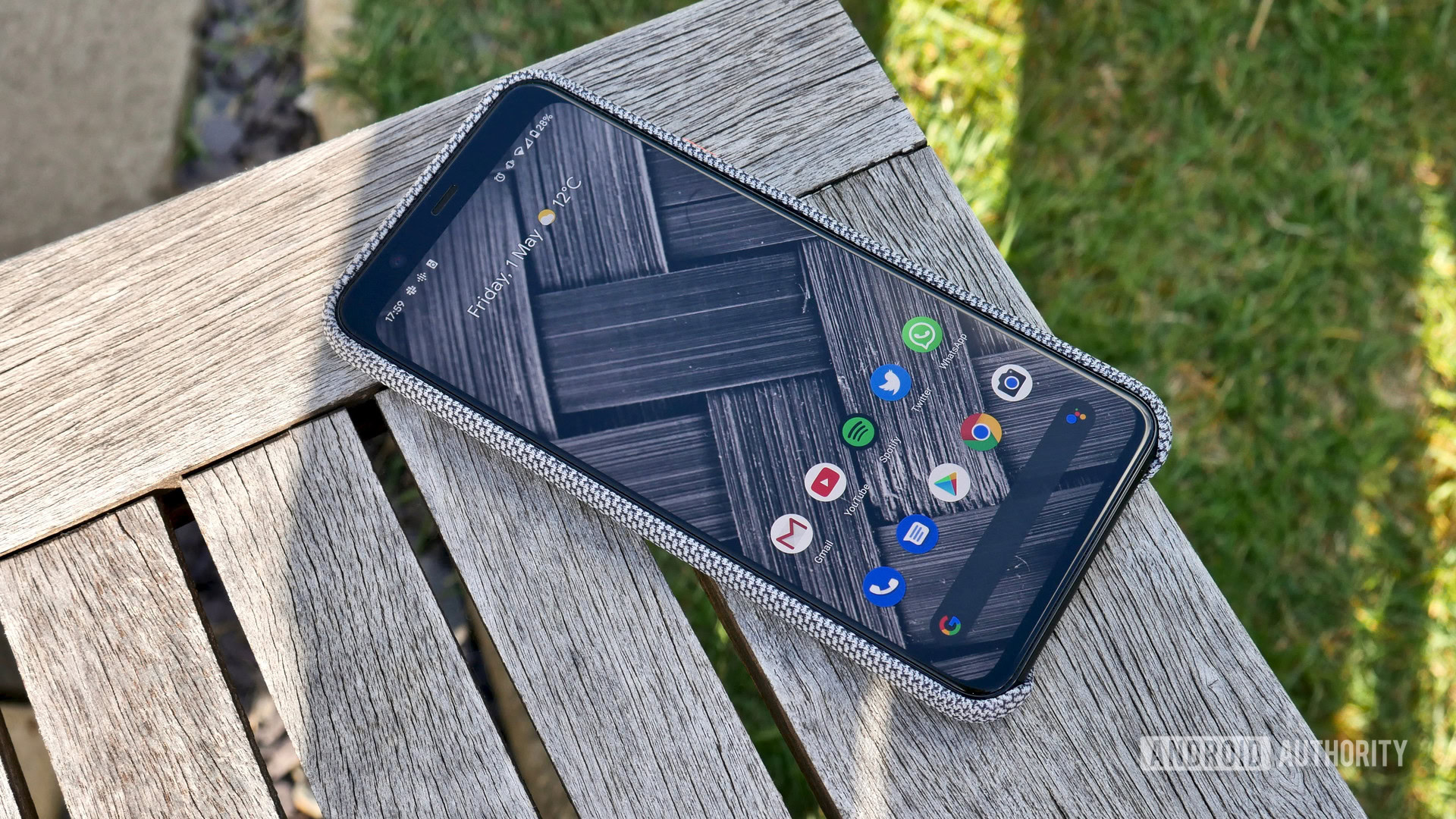
Soon after our Pixel 4 review was originally published, it was revealed that the phone actually ran at 60Hz whenever display brightness dipped below 75%. Google addressed this issue in an update.
We noticed our Pixel 4 had a slight green tint to it. The Pixel 4 XL was better, but still a bit too blue. We compared them to previous Pixel generations and noticed a pretty high degree of variance in default color temperature across generations.
Turning the variable 90Hz display off is always an option if you're concerned about Pixel 4 battery life, and you should be.
There are three color settings for the Pixel 4 display: natural, boosted, and adaptive. Adaptive is the default and that’s what I left it at. The others just mute the colors a little or lock you into the more saturated palette all the time. Ambient EQ is kind of like Apple’s True Tone, adjusting the color and brightness of your display depending on the ambient environment.
In our time with the Pixel 4 family, we didn’t notice any issues with the display like we saw in previous years. Other than the discrepancy in color temperature, the displays were vibrant and sharp and serviceably bright in direct sunlight. In fact, according to our objective testing, the Pixel 4 XL is the best all-round smartphone display we’ve currently tested.
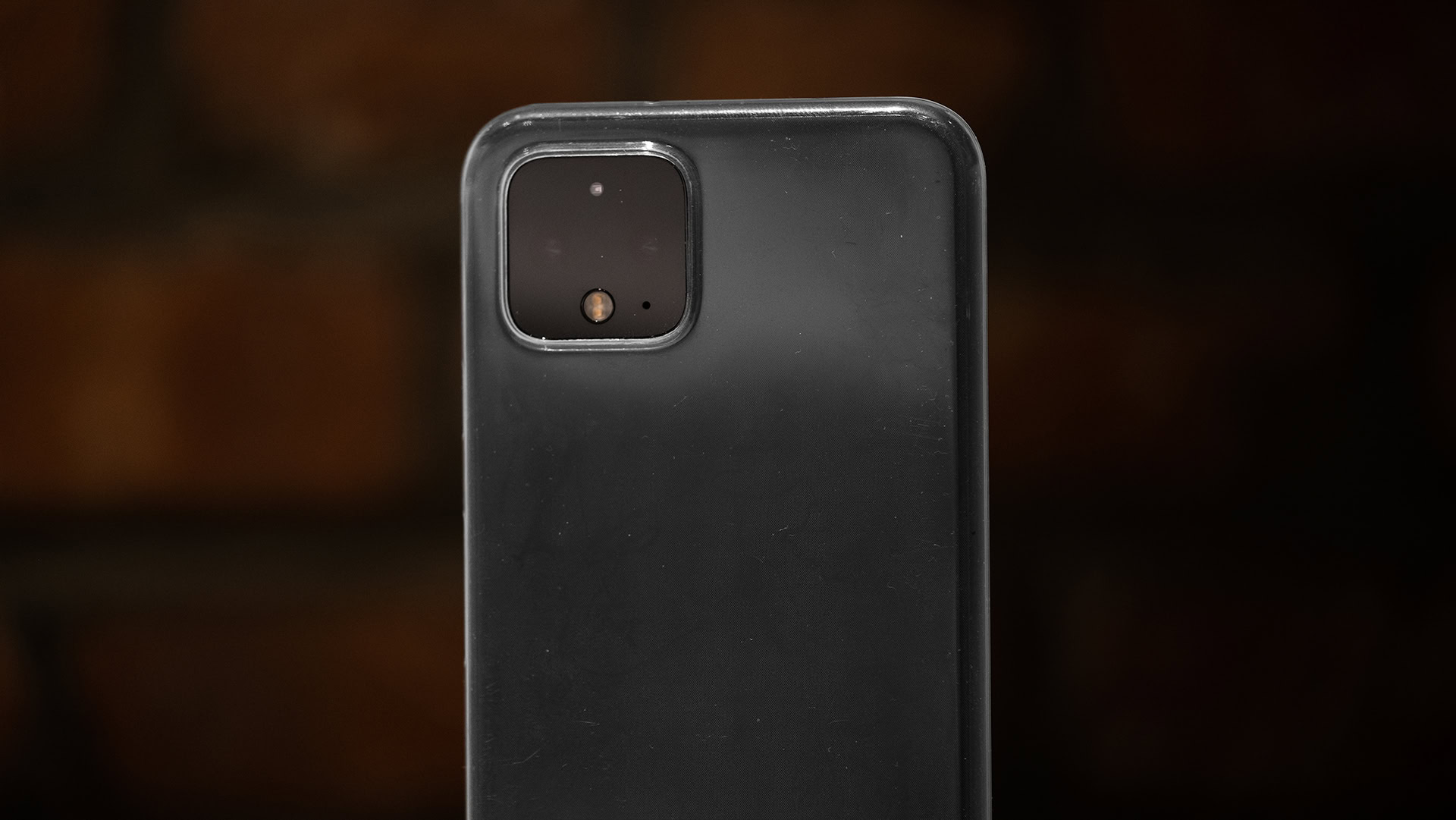
Performance
- Snapdragon 855
- 6GB RAM
- 64GB/128GB storage
- Titan-M security module
- Pixel Neural Core
- AR Core
The Pixel 4’s performance is surprisingly good. There’s 6GB of RAM in a Pixel for the first time and both models run the Qualcomm Snapdragon 855 mobile platform.
Pixels have long suffered from slow-down over time, so additional RAM is very welcome here, even if it is only 6GB. Unfortunately, we’ll have to wait a while longer to find out if more RAM has put past issues to bed or if the Pixel 4 family will also be affected.
The Pixel 4 seems to have addressed the RAM management issues that plagued the Pixel 3.
In the short term at least, more RAM means fewer issues with cached apps. The Pixel 4 seems to have addressed the RAM management issues that plagued the Pixel 3. For instance, you can now safely keep Spotify, Maps, and the camera in the cache without any of them being force closed. This is good news, but it really shouldn’t have been a problem in the first place.
While we appreciate seeing the bump in RAM here, nearly every other flagship now uses 8GB as the standard (barring the iPhone). You don’t even have the option for more RAM if you pay for the higher storage option. While the new Pixels may not need 8GB of RAM right now, given that Google guarantees updates for at least two more years, who knows where we’ll be then.
The same is true of storage. While Google is understandably enthusiastic about streaming all the things, not everyone can live their life in the cloud. The base model Pixel 4 and Pixel 4 XL have 64GB of storage (still), and it’ll cost you an extra $100 to double that to 128GB. For comparison, Apple only charges an extra $50 for the 128GB iPhone 11 and $100 more for the 256GB version. Given that original quality Google Photos uploads are no longer on offer and we’re never getting a microSD card on a Google phone, you have justifiable reasons to feel disgruntled.
Pixel 4 benchmark results:
Pixel 4 XL benchmark results:
On the positive side, we found Pixel 4 performance to be quite good. In our benchmarking, the smaller Pixel 4 slightly outperformed the Pixel 4 XL on average. This is due to the smaller model’s Full HD+ resolution, which requires fewer pixels to be pushed. The differences are pretty negligible and we were pleasantly surprised by how well the Pixel 4 scored against some pretty heavy-hitting competition, including the ASUS ROG Phone 2, the OnePlus 7T series, and the realme X2 Pro.
How does Motion Sense work?
Motion Sense is another big-ticket feature on the Pixel 4 with which we had mixed results. A Soli radar unit is positioned just to the right of the earpiece speaker. Enabled by default, it allows you to use swiping gestures above your phone to control it without touching it. You can snooze alarms, silence calls, skip music tracks, and fire up the Pixel 4’s infrared face unlock cameras before you even touch it for super-fast face unlocking (more on this below).
We had mixed results with Motion Sense: It worked fine on the Pixel 4, but not on the Pixel 4 XL.
While I found Motion Sense on the smaller Pixel 4 to be accurate and reliable, working around 95% of the time, David had a very different experience on the larger Pixel 4 XL, with it barely ever working as advertised. I didn’t have any luck with his Pixel 4 XL unit either. Perhaps he got a defective unit, but I’ve heard similar gripes from other reviewers. Perhaps Google can fix this in an update, but I wouldn’t recommend buying a Pixel 4 for this feature alone. It’s much better than a gimmick in my experience, but it needs to work reliably for everyone before I give it the credit I think it’s due.
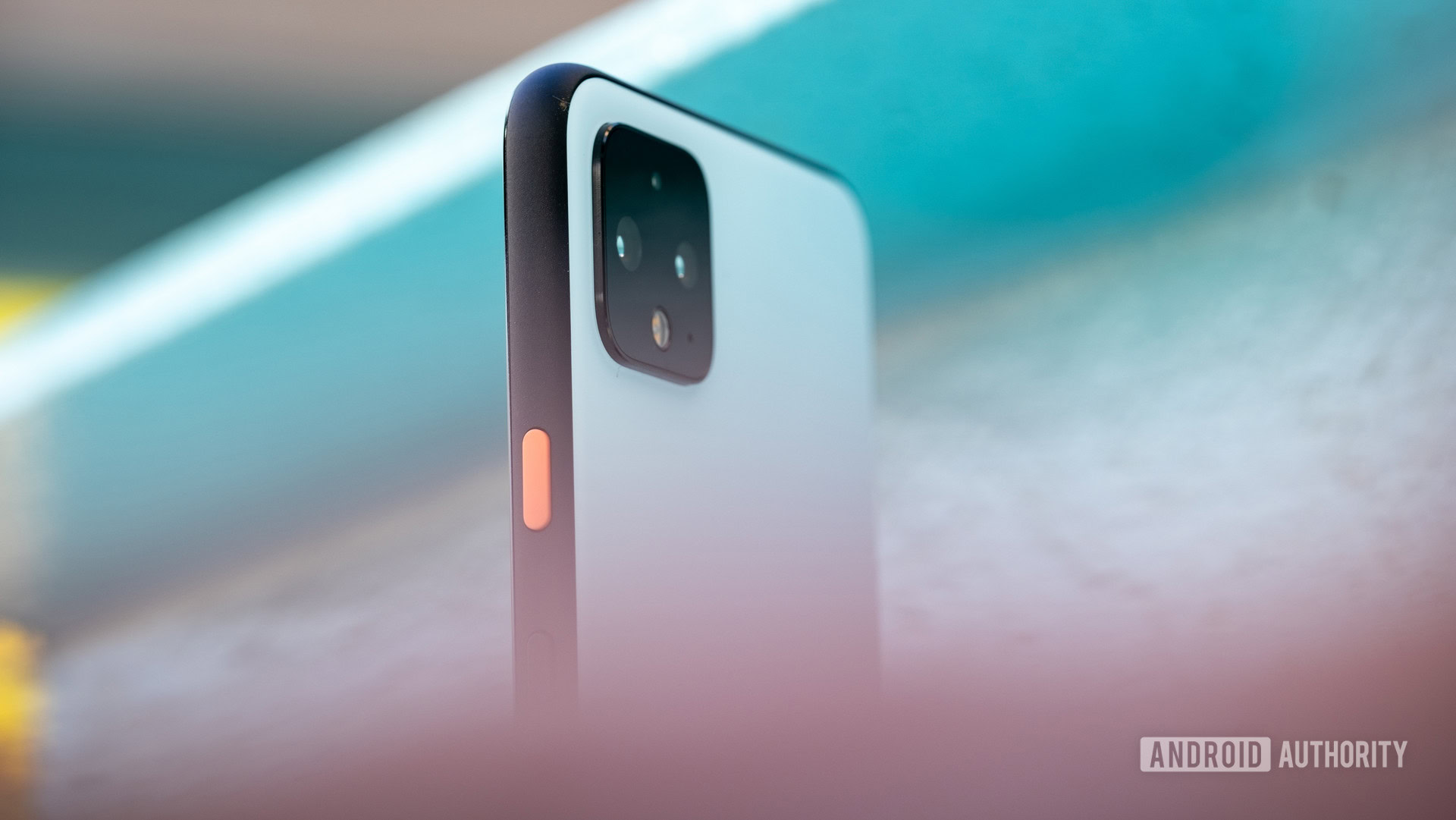
Battery
- Pixel 4:
- 2,800mAh battery
- Pixel 4 XL:
- 3,700mAh battery
- Both models:
- 18W/2A charging brick
- Qi wireless charging
- USB-C with USB-PD 2.0
While it appears that Google may have fixed the RAM problem in the Pixel 4, battery life is still not great. The smaller Pixel 4 actually has a smaller battery than the Pixel 3.
During the Google Pixel 4 XL review period, our smaller unit reliably got around four and a quarter hours of screen-on time per day with a ~12-hour cycle. Our Pixel 4 XL battery life averaged between five and a quarter to five and a half hours screen-on time with a similar ~12-hour usage cycle.
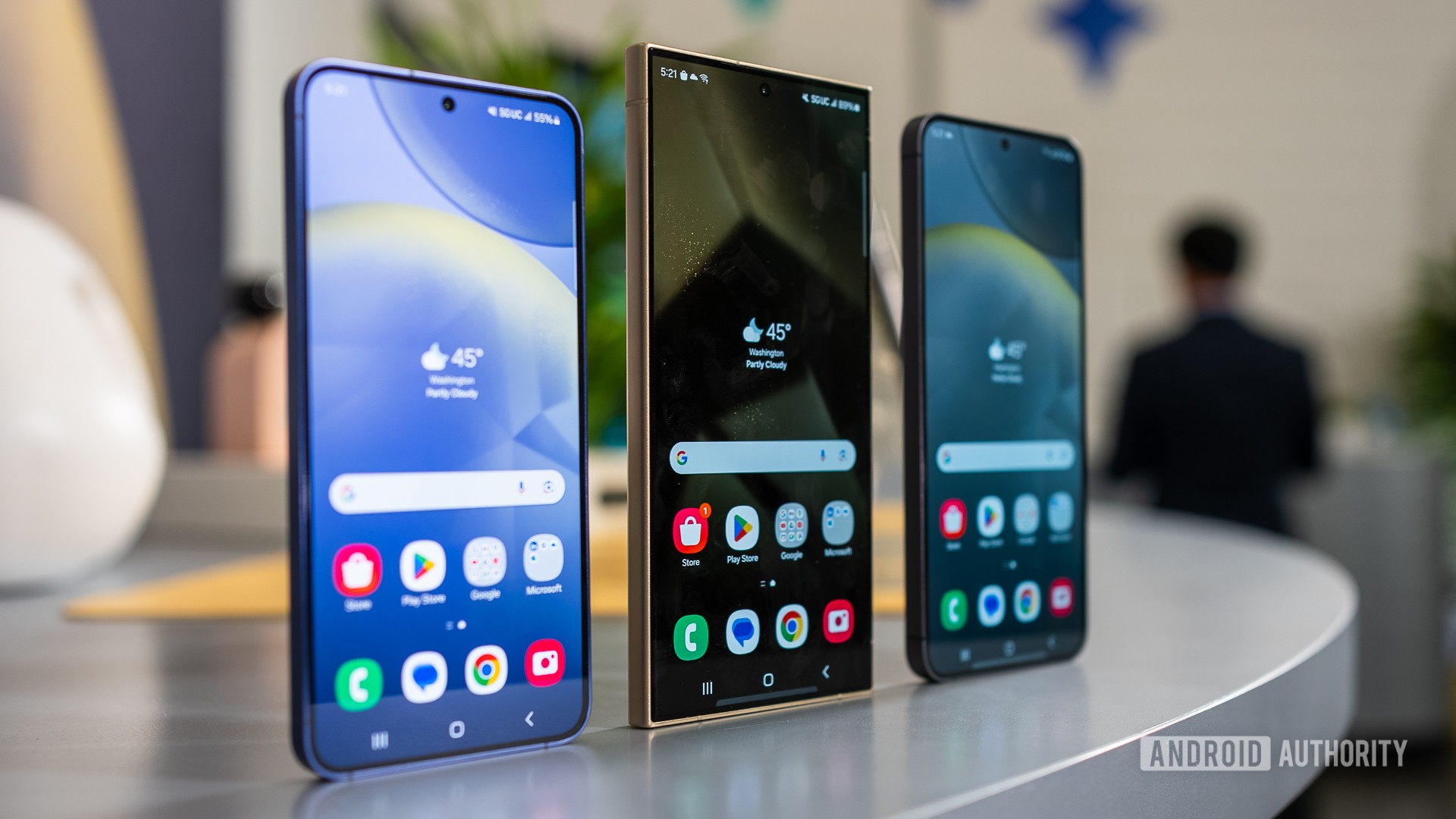
Over time, Android’s Adaptive Battery should learn your app usage habits and improve battery life, but there’s no getting around the fact these results are pretty average. Some of our industry colleagues were getting far worse battery life than us, so expect to see even worse battery experiences to be aired.
Adding new battery-hungry hardware features like a radar and 90Hz display should’ve warranted a much larger battery, especially on the smaller Pixel 4. The adaptive 90Hz refresh rate won’t impact battery life as much as it would if it weren’t variable, but a bigger battery here seems like a missed slam dunk. The battery is the primary thing keeping us from recommending the Pixel 4. (Note: We’ve seen so much variance among various Google Pixel 4 XL review units that we’re going to re-run our battery tests again and update this review in a couple of days.)
Google apparently still hasn't realized battery life is a thing people care about.
Google desperately needs to start focusing on the Pixel battery, especially when Apple’s new iPhone 11 series made the battery a primary focus. There’s no point adding a radar, 90Hz display, and long-exposure camera if using them means you’ve got zero chance of making it through a full day. We should be far beyond the days of having to gimp our phones just to get through 24 hours of normal usage.
To add charging insult to battery injury, the Pixel 4 models come with an 18W charging brick, the same 18W charger Pixels have been shipping with since the beginning. Considering other manufacturers have 25W, 30W, 40W, 50W, and even 65W fast chargers, Google is once again lagging behind. The battery is by far the biggest disappointment with the Pixel 4 series. Google apparently still hasn’t realized battery life is a thing people care about. Both models support Qi wireless charging including 10W via the Pixel Stand, but there’s no reverse wireless charging here either.
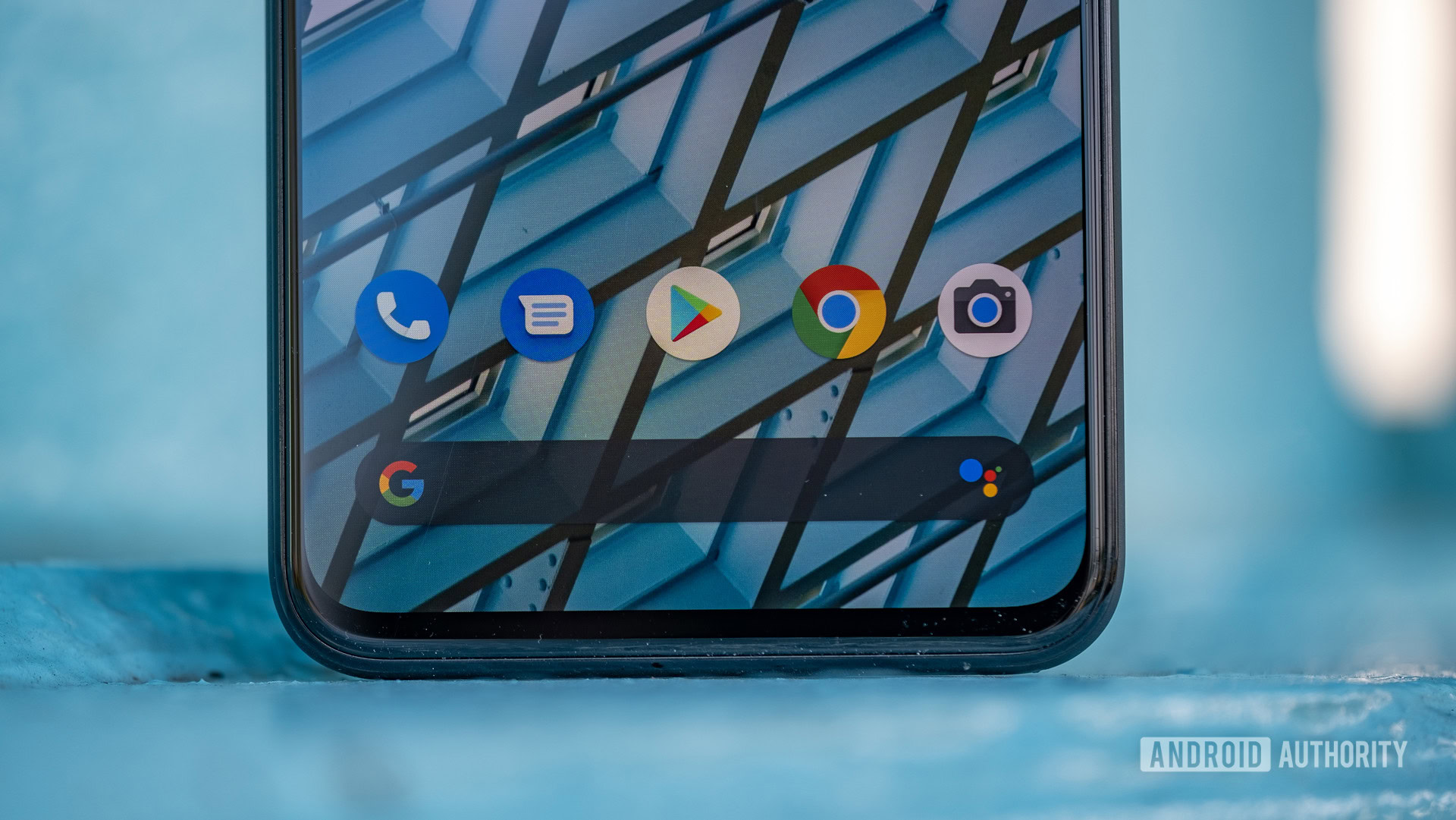
Software
- Android 10
- 3 years OS and security updates
- New Google Assistant
- On-board language processing
- Pixel feature drops
I won’t go too far into Android 10 on the Pixel 4 XL, as we have covered it in lots of detail elsewhere. Suffice it to say the software experience on the Pixel 4 is fluid and smooth — in part thanks to the 6GB of RAM and 90Hz display. If you don’t mind carrying an external battery pack around with you, we encourage you to keep them turned on.
The Pixel 4 does come with a few new software features and that’s what we’ll focus on here. The most useful of them is the New Google Assistant. With the Pixel 4, Google moved Assistant’s language processing on-device. This makes it much, much faster than before and more secure as well. But there’s a catch.
The issue is that you can’t currently use the new Assistant if you use traditional three-button navigation or have a G Suite account on your device. Considering a lot of people use G Suite for business or school, this is a huge disappointment. For what it’s worth, Google says it is working on a fix for the G Suite issue so things may change.
Another feature that takes advantage of the Pixel 4’s on-board language processing and machine learning is the new Recorder app. Not only is it blazing fast, transcribing your speech in close to real time, it is also searchable. This means you can search dozens of saved voice recordings for a particular word or phrase and identify the recordings in which it appears. The Pixel will even show you a timeline of those recordings with the searched-for words or phrases highlighted.
There are existing recorder apps that have similar functionality, but what makes Google’s special is that processing is done on-device. This means you can see a transcription in real-time, even without a data connection. You can also export either the audio or transcription to Google drive if you want to share them.
Android 10 on the Pixel 4 and Pixel 4 XL is generally great. Navigation gestures won’t suit everyone, but if you swapped over a while ago you’ll be used to them by now. You can still enable three-button navigation, but I doubt it’ll be long before Google axes the option.
On December 9, Google released a surprise update to the Pixel 4 and Pixel 4 XL. Called a “feature drop,” this update is supposed to be the first in a series of regular patches that will add new functionality to the Pixels. The first Pixel 4 feature drop brought performance enhancements, new photo editing tools, enhanced Call Screening, and improved Duo calls. Read on to see why feature drops have the potential to be a big deal, and not just for Pixel users.
One odd thing to address: David suffered from a weird launch delay when firing up the Settings menu on the XL. It’s not a RAM issue as the app wasn’t in memory, so it appears to be a flash storage issue. We’ll update our Google Pixel 4 XL review if and when we get to the bottom of the problem.
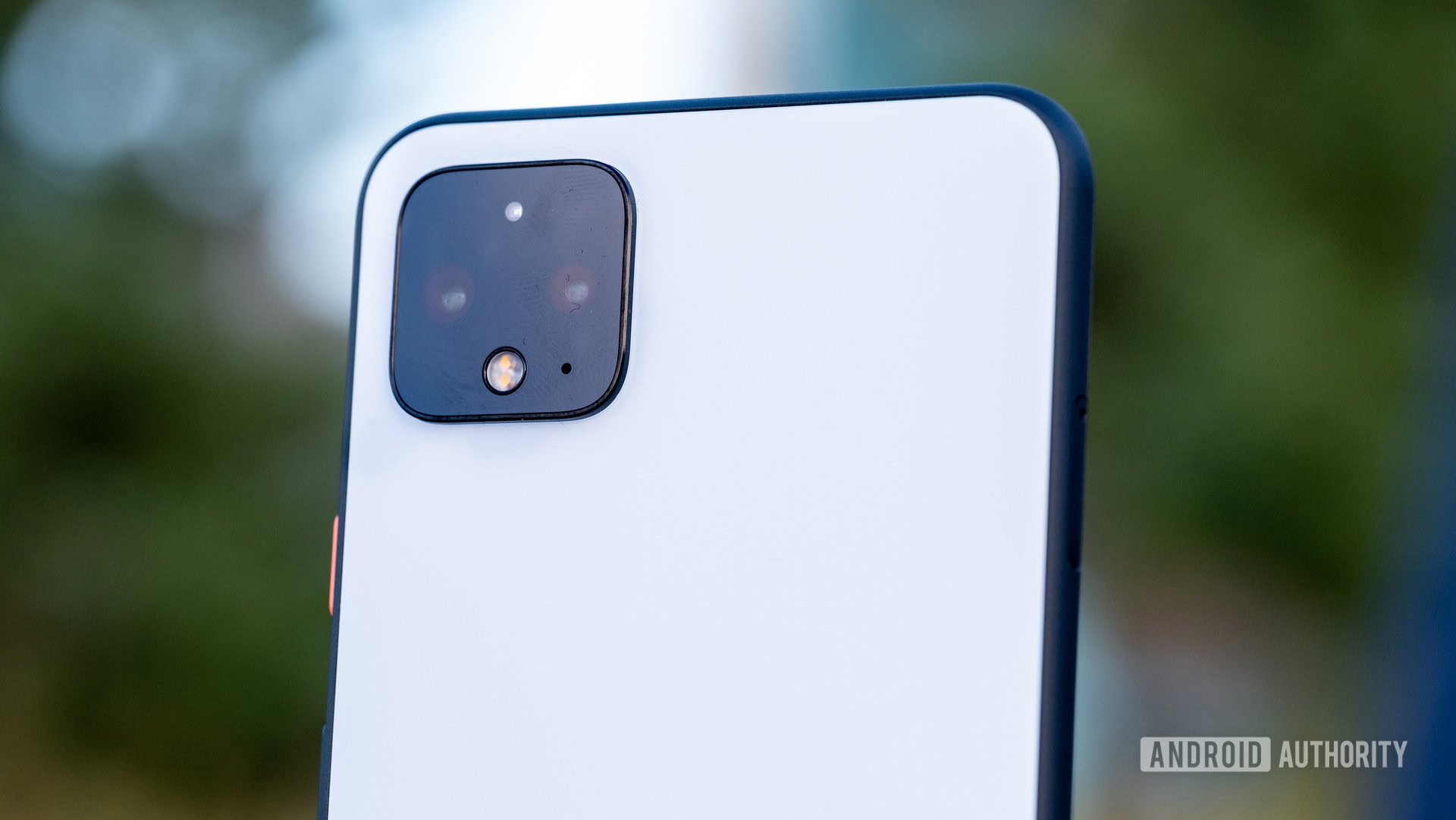
Camera
- Main camera:
- 12.2MP sensor
- ƒ/1.7 aperture
- 1.4μm pixel size
- 77-degree FoV
- OIS + EIS, PDAF
- 2x tele camera:
- 16MP sensor
- ƒ/2.4 aperture
- 1.0μm pixel size
- 52-degree FoV
- OIS + EIS, PDAF
The Pixel 4 camera is better than the Pixel 3 — and to my eyes, better than the iPhone 11 Pro too — but it’s not as significant a camera improvement as you might have been hoping for. Yes, there’s now a second camera, but it’s a 2x telephoto lens rather than a wide-angle.
According to Google, wide-angle lenses are fun but zoom is more useful. Agree with that or not, the fact remains that the Pixel 4 camera system is not as versatile as many other phones out there that offer all three (Apple iPhone 11, Samsung Galaxy Note 10, etc.). The 2x tele lens not only lets you get zoomed-in shots at optical quality, it also contributes to Super Res zoom for better in-between zoom ranges and helps with portrait mode improvements. The tele is functional and high quality, but I’d trade it in for a wide-angle any day.
The real killer feature on the Pixel 4 camera is astrophotography mode, which is so insane you have to see it to believe it.
The real killer feature on the Pixel 4 camera is astrophotography mode, which is so insane you have to see it to believe it. When in Night Mode, if the Pixel 4 detects the light is low enough and the sky is visible it will enter astrophotography mode automatically. It then takes up to sixteen 15-second-long exposures, aligns and tweaks them in the background and pops out the kind of astrophotography you normally only get from a fancy DSLR and a lot of editing. The results speak for themselves and are truly incredible.
Unfortunately, the presence of an astrophotography mode throws the lack of a wide-angle lens into sharp relief, as it’s difficult to make the most of the night sky when you can barely fit any of it in the frame.
What lenses the Pixel 4 has, though, are very impressive. The Pixel 4 manages to capture more detail than the Pixel 3, handles white balance even better thanks to a machine learning-based algorithm, and improves on HDR, portrait mode, and selfies. We did note selfies occasionally left some subjects looking a little plasticky while others were fine. Portrait mode cutouts were more accurate and bokeh was slightly more realistic. We have a massive Pixel 4 camera comparison that dives into tons of detail, so go check that out.
The Pixel 4 camera is once again the very best smartphone camera we've seen. But its lead is slowly eroding.
Suffice it to say the Pixel 4 camera is once again the very best smartphone camera we’ve seen. But its lead is slowly eroding. It’s not leading the field by anywhere near as wide a margin as it was three years ago. The Pixel camera’s dominance is at serious risk of being eclipsed by other phones next year if Google doesn’t step up its game even more in the next 12 months. There’s blood in the water and every other manufacturer, including Apple, has picked up the scent of it.
Another truly innovative feature of the Pixel 4 is live HDR+. The Pixel 4 can preview what your image will look like before you take the shot, so you can see the processing before it actually happens. While this is pretty remarkable in its own right, it enables another feature that shows Google isn’t rolling over just yet.
Seeing HDR in real-time means Google was able to add local adjustment sliders when you tap. Where previous devices would balance exposure to the area you tapped on, that action has been remapped to reveal brightness and shadows sliders. This means you can adjust individual elements of the photo before you even take it, which is something that can’t even be done with traditional cameras.
It’s clear Google isn’t trying to make cameras with the Pixel camera system, but rather solve problems traditional cameras have always had. If you want to learn more about this, make sure you check out our interview with Google’s camera boss.
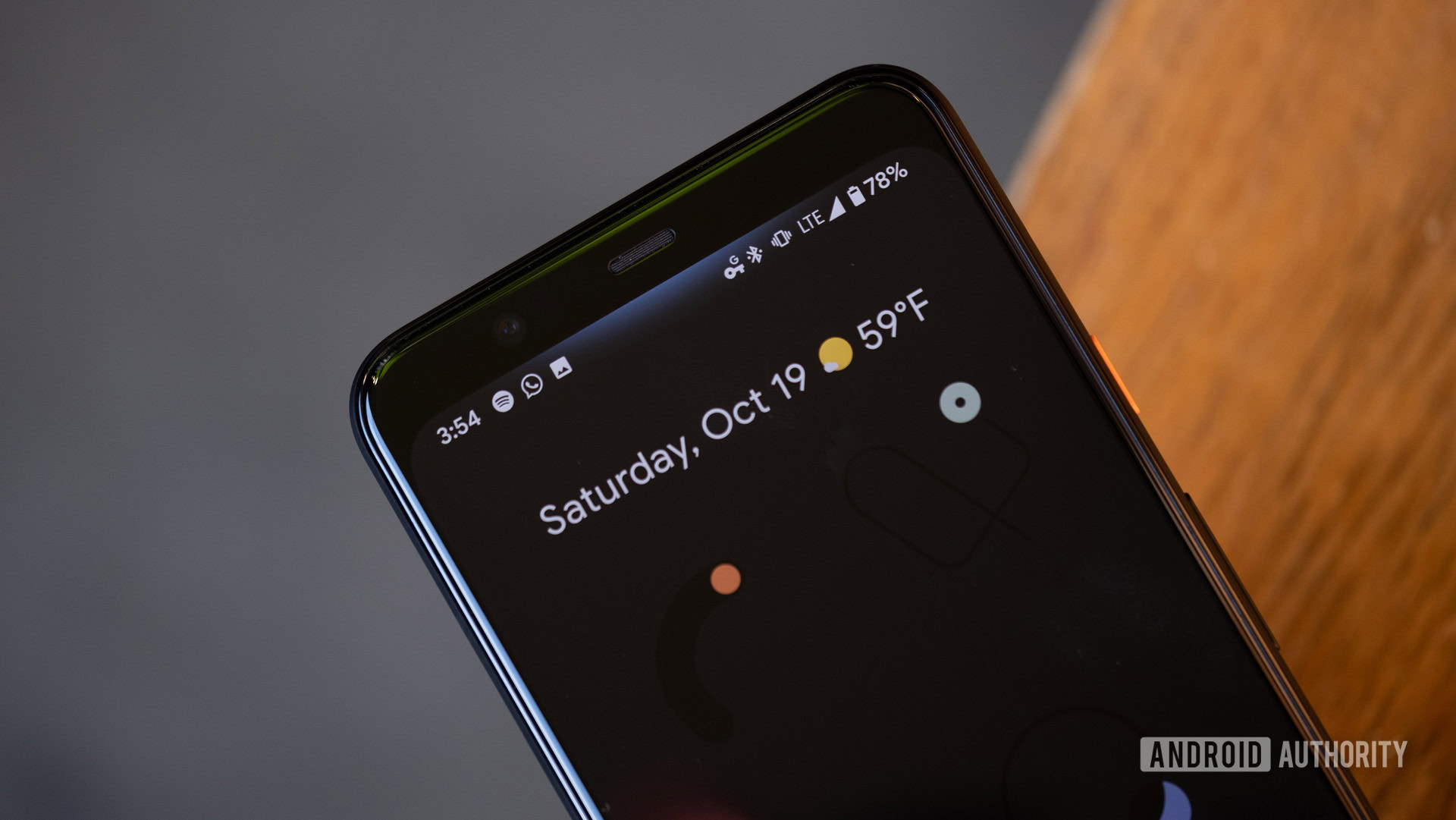
- Front-facing camera:
- 8.1MP sensor
- ƒ/2.0 aperture
- 1.22μm pixel size
- 90-degree FoV
- Face unlock:
- 2 x NIR cameras
- NIR flood emitter
- NIR dot projector
How good is Pixel 4 face unlock?
Face unlock on the Pixel 4 is fantastic. It even works upside down. Your face data is stored locally in the Pixel’s secure Titan M chip — not in the cloud. It uses two near-infrared (NIR) cameras, a flood emitter, and dot projector for a very iPhone-like face unlocking experience.
The difference is that the Pixel 4’s face unlock is faster, thanks to the Pixel Neural Core and Motion Sense, powered by Soli radar. Because the Pixel 4 knows you’re going to pick it up before you even touch it, the NIR cameras are already searching for your face as soon as you reach for your phone. In my testing, face unlock on the Pixel 4 was faster than the iPhone 11 every time.
I should mention that while I had no issues with Motion Sense detecting my hand as I reached for the phone, David did. For him, the experience was much less reliable than it was for me. The issue here is that if the radar doesn’t detect your hand reaching for the phone, your face unlock will be a bit slower. Raise-to-wake still works, so the result is the same — it’ll just take longer.

Like the iPhone, the Pixel 4’s face unlock is secure enough for mobile payments and app unlocking. It’s a shame though that Google left out the requirement that your eyes be open. This poses a potential security risk, as your face could be used to unlock your phone when you’re asleep or unconscious or even worse yet, against your will.
The lack of a fingerprint scanner is a bit disappointing here, because face unlock is not foolproof. Although the Pixel’s face unlocking was good in my experience, it’s won’t be the biometric solution of choice for everybody.
The lack of a fingerprint scanner is a bit disappointing here, because face unlock is not foolproof.
There is also the issue of biometric login for apps. While Apple may have the pull to force app developers to support a new authentication method, Google doesn’t. Switching to face unlock without also including a fingerprint sensor means you won’t be able to use your identity to unlock certain apps — at least until developers update them. Yes, you can just use your PIN, but this feels like a step backward, not forwards.
It should be noted that Android 10 supports a new catch-all API for bio-authentication that includes face unlock. This means developers should be able to update their apps fairly easily, but Google needs to be more assertive with making sure it gets done. David struggled with not being able to sign into many apps via biometrics because they didn’t yet support face unlock on Android.
What about video?
The Pixel 4 series makes it pretty clear that Google doesn’t care as much about video as it does photography. While the iPhone 11 has 4K at 60fps on its front-facing camera, the Pixel 4 still doesn’t even support it on its primary camera.
The Pixel 4 shoots perfectly fine 1080p video at 30, 60, and 120fps, but you can only shoot 4K video at 30fps on the main camera. This is disappointing for a phone that tries to position itself as a camera-first device. You just need to go into the More menu in the camera app to select Slow Motion and then choose between a 1/4 and 1/8 toggle which also switches you between Full HD video and HD. EIS and OIS do at least mean video is super stable and smooth.
It’s a shame Google doesn’t seem interested in catching up to the competition, let alone pushing the limits of videography. The company is very clearly invested in breaking new ground where mobile photography is concerned, but video is sadly a second-class citizen.
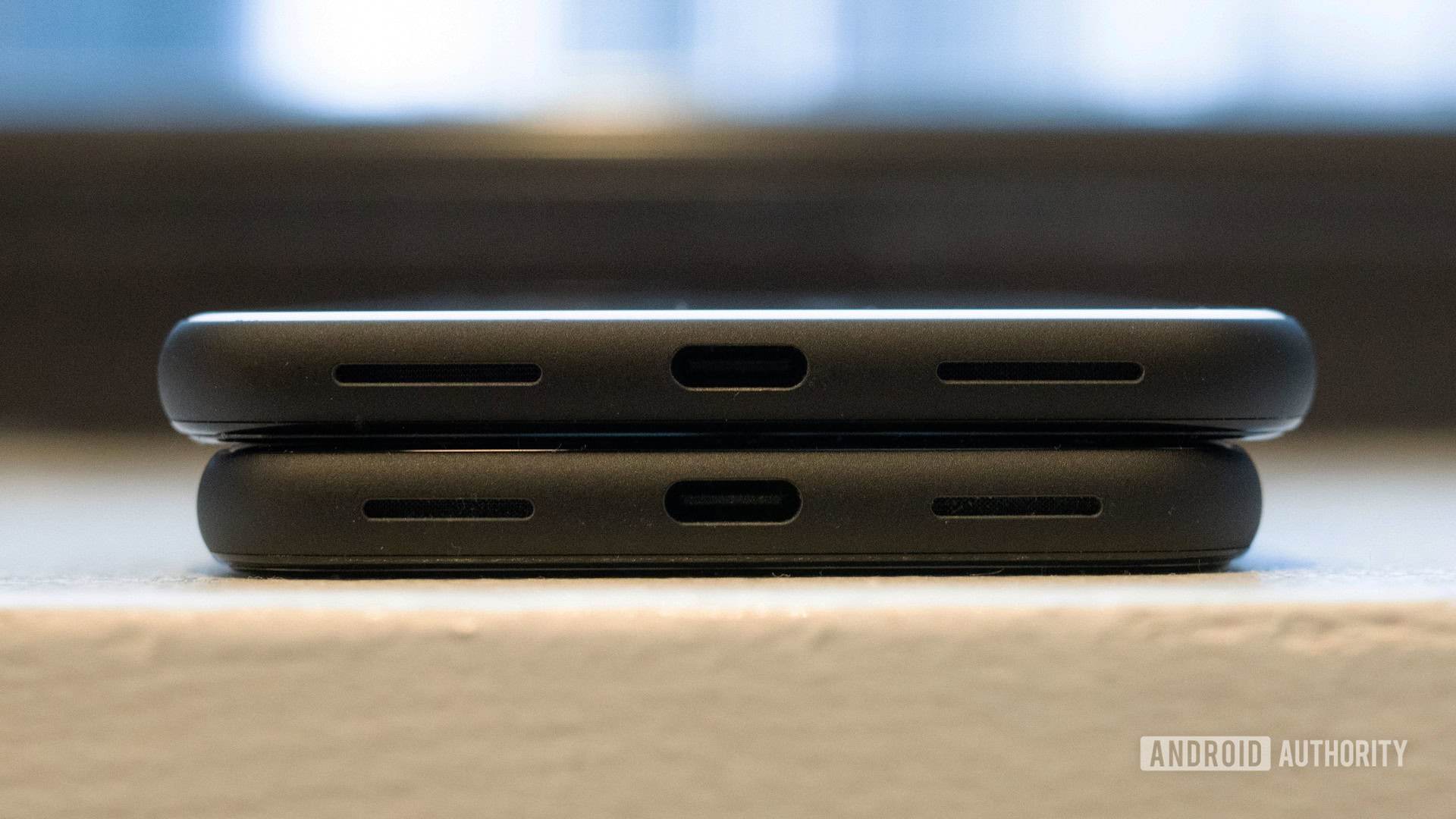
Audio
- Stereo speakers (earpiece and bottom-firing)
- No 3.5mm headphone jack, no adapter
- 3 microphones
- Noise suppression
Audio is perfectly good on the Pixel 4. There’s no headphone jack, but you can pick up a smart Google dongle if you need wired headphones or you can connect via Bluetooth. The phone supports SBC, AAC, aptX, aptXHD, and LDAC codecs, but there’s no aptX Adaptive here yet. Regardless, you won’t notice any issues and it’ll handle whatever audio you throw at it just fine.
There are stereo speakers on the Pixel 4 via the earpiece and a bottom-firing speaker. They’re noticeably louder than the Pixel 3 and have a richer sound all round. The Pixel 4 handles treble a lot better than the Pixel 3, and the bass is rounder without getting tinny at the high end. At higher volumes, there’s less distortion too, so well done Google.
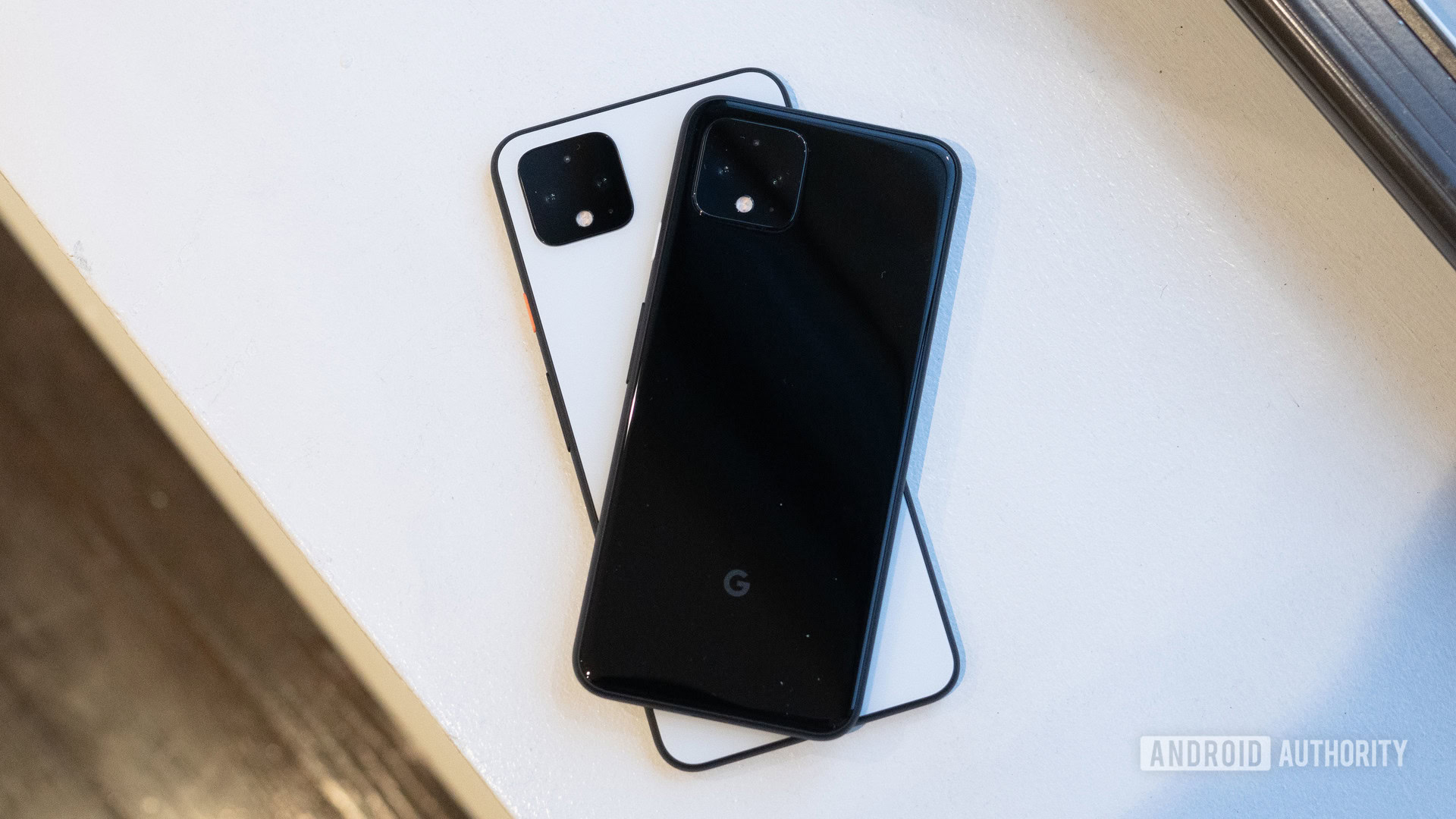
Google Pixel 4/XL specs
| Google Pixel 4 | Google Pixel 4 XL | |
|---|---|---|
Display | Google Pixel 4 5.7-inch pOLED Smooth Display 2,280 x 1,080 resolution, 444ppi 19:9 aspect ratio 90Hz refresh rate Ambient EQ Gorilla Glass 5 | Google Pixel 4 XL 6.3-inch pOLED Smooth Display 3,040 x 1,440 resolution, 537ppi 19:9 aspect ratio, 537ppi 90Hz refresh rate Ambient EQ Gorilla Glass 5 |
Processor | Google Pixel 4 Qualcomm Snapdragon 855 Pixel Neural Core | Google Pixel 4 XL Qualcomm Snapdragon 855 Pixel Neural Core |
GPU | Google Pixel 4 Adreno 640 | Google Pixel 4 XL Adreno 640 |
RAM | Google Pixel 4 6GB | Google Pixel 4 XL 6GB |
Storage | Google Pixel 4 64GB, 128GB | Google Pixel 4 XL 64GB, 128GB |
MicroSD | Google Pixel 4 No | Google Pixel 4 XL No |
Battery | Google Pixel 4 2,800mAh 18W fast charging Qi wireless charging | Google Pixel 4 XL 3,700mAh 18W fast charging Qi wireless charging |
Cameras | Google Pixel 4 Rear: 12.2MP Dual-Pixel, ƒ/1.7 aperture, 1.4μm, 77 degree FOV, OIS + EIS, PDAF 16MP telephoto, ƒ/2.4 aperture, 1.0μm, 52 degree FOV, OIS + EIS, PDAF Front: 8.1MP, ƒ/2.0, 1.22μm, 90 degree FOV Video: 1080p @ 30 FPS, 60 FPS, 120 FPS 720p @ 240 FPS 4K @ 30 FPS | Google Pixel 4 XL Rear: 12.2MP Dual-Pixel, ƒ/1.7 aperture, 1.4μm, 77 degree FOV, OIS + EIS, PDAF 16MP telephoto, ƒ/2.4 aperture, 1.0μm, 52 degree FOV, OIS + EIS, PDAF Front: 8.1MP, ƒ/2.0, 1.22μm, 90 degree FOV Video: 1080p @ 30 FPS, 60 FPS, 120 FPS 720p @ 240 FPS 4K @ 30 FPS |
IP rating | Google Pixel 4 IP68 | Google Pixel 4 XL IP68 |
Headphone jack | Google Pixel 4 No | Google Pixel 4 XL No |
Sensors | Google Pixel 4 Active Edge Motion Sense Dot projector Soli radar Accelerometer Ambient Light Sensor Barometer (Altimeter) Face ID Gyroscope Proximity | Google Pixel 4 XL Active Edge Motion Sense Dot projector Soli radar Accelerometer Ambient Light Sensor Barometer (Altimeter) Face ID Gyroscope Proximity |
Security | Google Pixel 4 Face unlock Titan M Security Module | Google Pixel 4 XL Face unlock Titan M Security Module |
Connectivity | Google Pixel 4 Wi-Fi 2.4 GHz + 5 GHz 802.11 a/b/g/n/ac 2x2 MIMO Bluetooth 5.0 + LE (HD codecs: AptX, AptX HD, LDAC) NFC Google Cast USB-C | Google Pixel 4 XL Wi-Fi 2.4 GHz + 5 GHz 802.11 a/b/g/n/ac 2x2 MIMO Bluetooth 5.0 + LE (HD codecs: AptX, AptX HD, LDAC) NFC Google Cast USB-C |
Software | Google Pixel 4 Android 10 | Google Pixel 4 XL Android 10 |
Dimensions and weight | Google Pixel 4 68.8 x 147.1 x 8.2mm 162 g | Google Pixel 4 XL 75.1 x 160.4 x 8.2mm 193g |
Colors | Google Pixel 4 Just Black, Clearly White, Oh So Orange | Google Pixel 4 XL Just Black, Clearly White, Oh So Orange |
Value for money
- Pixel 4 64GB – $799
- Pixel 4 128GB – $899
- Pixel 4 XL 64GB – $899
- Pixel 4 XL 128GB – $999
At its launch price, it’s practically impossible to recommend the Pixel 4 as good value for money. Yes, it provides a fantastic camera and software experience with performance to boot (for now). But these characteristics are by no means unrivaled in the Android or iOS space anymore. You can get a reasonably comparable camera on any of a half-dozen phones, some priced much lower than the cheapest Pixel, and great software and performance on a lot of phones.
It's practically impossible to recommend the Pixel 4 as good value for money.
At $799, the 64GB Pixel 4 is overpriced. For reference, the base model iPhone 11 costs $699 and it also has 64GB of storage. It’ll cost you $100 more to get 128GB on either Pixel 4, whereas Apple charges half that on the iPhone. At $899, the 128GB Pixel 4 is too expensive for a phone that will struggle to get you through a full day without disabling features. The $899 Pixel 4 XL is equally hard to recommend with just 64GB of storage, no microSD card, and no original quality Photos uploads. Which leaves us with the $999 128GB Pixel 4 XL as the only viable option. And that’s still expensive for what you get.
As with Apple devices, value is in the eye of the beholder (the iPhone 11 Pro starts at $999 and it only has 64GB of storage). As with the iPhone, the Pixel price point is simply what it costs to have “the Google phone.” You’ll either be okay with paying whatever price Apple or Google put on their phones or you won’t, but value for the money is not part of the equation.
Since this review was first published, a number of limited-time promotions have made the Pixel 4 and Pixel 4 XL a much more attractive proposition. The devices were $200 off for Black Friday week, for instance. At the time this review was last updated, Verizon customers could get the Pixel 4/XL for $300 off in form of promo credit applied to their accounts over two years. AT&T customers looking to upgrade plans could get the Pixel 4 for effectively free ($300 instant discount, and $30/month plan credit).
Pricing discounts on the Pixel line have become a semi-permanent thing. While big sales have come and gone, the phones are routinely discounted $100 or more from the likes of Amazon, Best Buy, and others. Lower prices, in addition to the software improvements made over time, make the Pixel 4 XL a better deal today than it was at launch. However, we’re now five months to the Pixel 5, which we hope will be dramatically better.
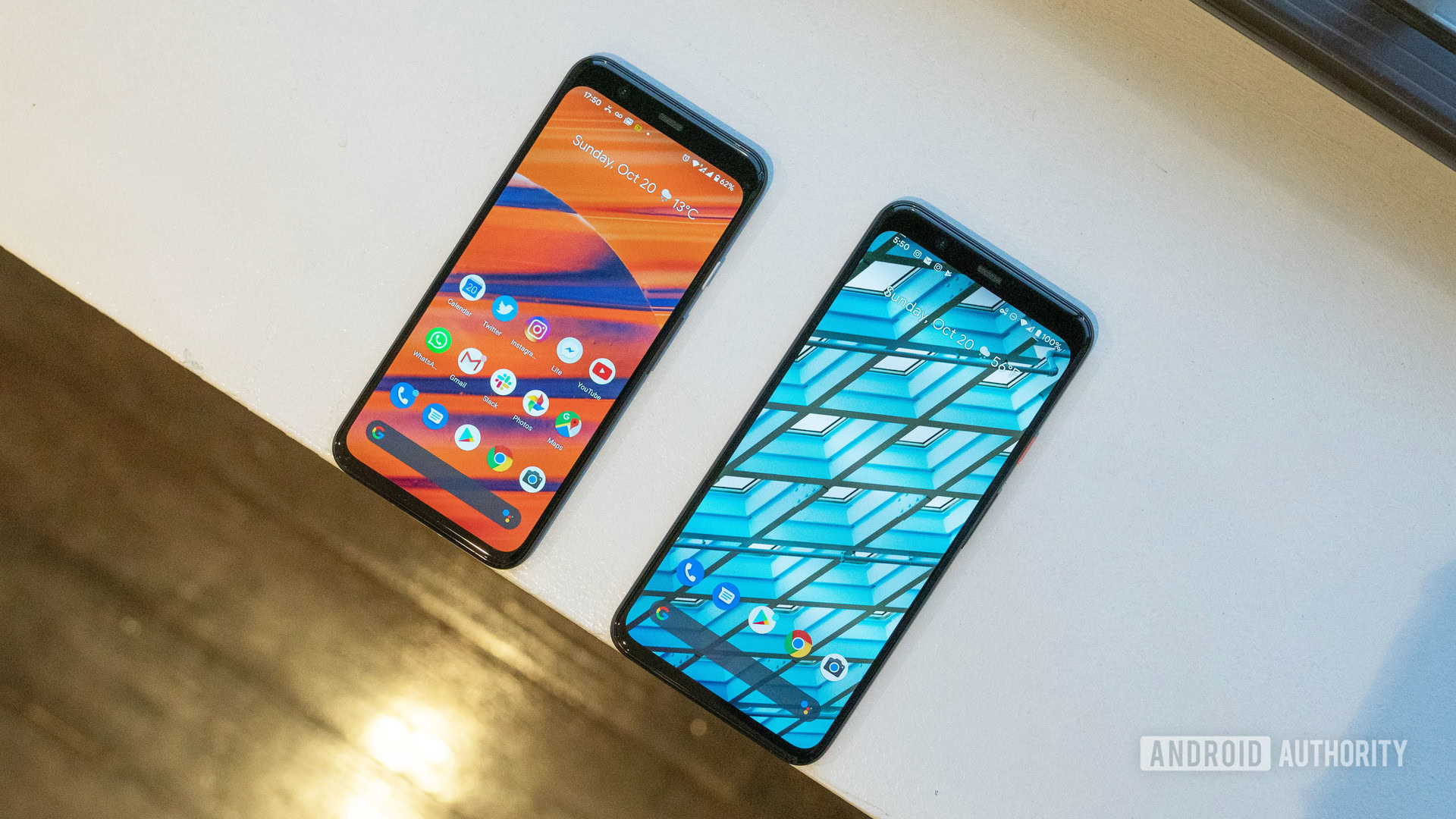
Google Pixel 4 XL review: The verdict
Update – May 22: Updated with the latest deals due to sales pricing. The Pixel 4 XL is available on sale for about $100 off from Amazon, depending on the color and storage variant you choose.
This has been a tough review to write. Google has historically gotten a bit of a “pass” with previous Pixels’ flaws because the camera was just so great. Even though the Pixel 4 camera is still the best on a smartphone in my opinion, it’s a lot harder to recommend this year’s Pixel. Yes, the camera is amazing, the software is excellent, performance is impressive, design is bold, build quality is excellent, the screen is fantastic, but…
We arrive right back where we started.
The Google Pixel 4 and Pixel 4 XL are great phones for all the reasons I’ve just listed. But something is off. Google is pushing photography but not video. It hasn’t upgraded the Pixels’ charging situation and has arguably made the battery situation worse. We got an extra camera but realistically should’ve gotten three. For the price, 64GB shouldn’t be the base model. The radar is cool but unreliable and nowhere near as impressive as the Soli demos we’ve seen for years. Face unlock is great when it works but creates as many problems as it solves. Google Assistant is faster and more secure but only if you obey some totally arbitrary rules. The 90Hz display is excellent but using it might mean you can’t get through a full day. Performance is good now but how likely is it to still be in two or three years? The list goes on.
For everything I love about the Pixel 4 there's something that disappoints me.
For everything I love about the Pixel 4 there’s something that disappoints me. It’s a hard phone to recommend, and to me at least, serves as a great advertisement for the Pixel 3. Perhaps Google will address some of the issues I’ve listed via future software updates, but we don’t review based on maybes. I really do like the Pixel 4, but I can’t shake the feeling it’s not good enough, not as good as it should be at this point. Like the cosmos, the Pixel 4 is full of wonders both big and small, yes, but it’s equally full of untapped potential and missed opportunities.
The phone has gotten better. Battery life, while still not great, has improved over time with tweaking. Moreover, the camera remains best-in-class, despite Google’s shortcomings on video, and everything about the experience is more stable.
Google Pixel 4 in the news
- Google CEO Sundar Pichai says of Pixel 4 ‘Hardware is hard’
- The only reason Pixel isn’t Android’s crown jewel is Google
- Google disappointed with Pixel 4
- Pixel 4 XL revisited after 6 months
- Google uses software magic to replicate Apple’s 3D touch on Pixel 4
- Android’s March security update breaks features on some Google Pixel devices
- Second Pixel feature drop here: Dark theme scheduling, fast Google Pay, more
- Yeah, Motion Sense is just a gimmick, but I still want it on the Pixel 5
- Google confirms decline in hardware sales: Is Pixel 4 to blame?
- Google testing double-tap gesture on rear of Pixel phones
- Google Pixel 4a and Pixel 4a XL: Everything we know so far (Updated)
- Pixels don’t have the best battery life, but Google is working on a solution